Members contemplate precarity in life, in work.

Precarity
Uncertain art
A stone
A wrapping
A frost
A sunrise
A showing
A pithy display
Sure death
Martin Heron
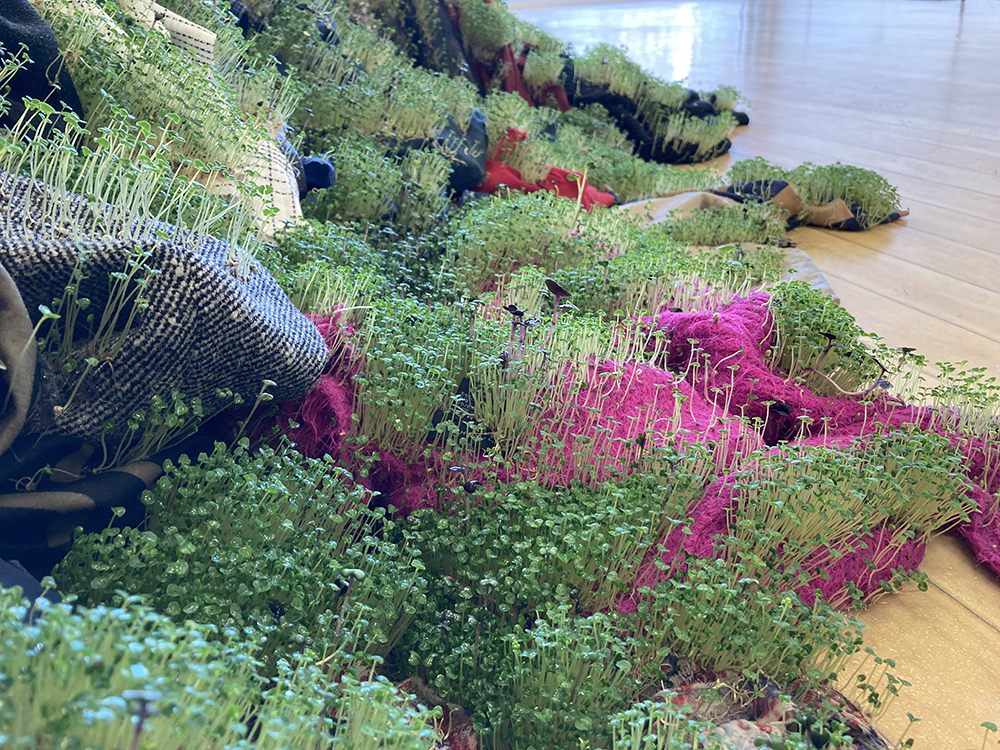
I have an allotment by the river in Hackney and over the past fifteen years of growing fruit and veg on it, the one thing I have learnt is that nothing is certain. Different plants flourish or fail each season depending on the sun, the rain, the slugs and snails and the time I have available to be down there looking after them. So it didn’t surprise me when I first started experimenting with seedlings in my art practice that working with living plant matter brought a substantial element of precariousness to my work. Will the seeds sprout? Will they die without regular watering? Is it possible to move the work without breaking them?… For me working with this uncertainty is uncomfortable, but it feels relevant to the increasing precarity of our existence.
Beverley Duckworth
I now believe that being in a state of precarity is a state that many are in. This dogged feeling is heightened when in the studio, be it embarking on new work or destroying it in order to improve a work. Is it relevant? Will it work? Why make another painting when so much is unsold? Will a work be selected on not selected for shows? Why paint in the twenty-first century at all? Precarity only gives momentarily when you reach a state of happiness and meaning making the work.
Julie Held
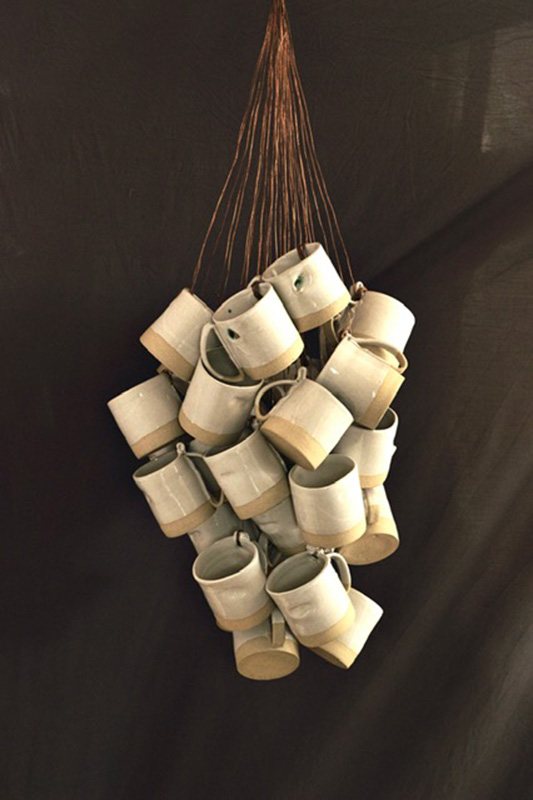
Personally, I constantly grapple with the precarity of all life, not just human, and these wonderings on histories and legacies feed into my work in multiple ways: For years I worked with salvaged and scavenged copper which is one of the most recyclable materials we have sourced from the earth. The residues of purpose the material has served seem eternal, and any mistakes could easily be reinserted into the salvage and recycle system.
However, the physical toll the weight and nature of the metal took on me began to feel counterproductive. I was sacrificing my own health and state of mind to produce work which I imagined would have a minimal impact on the environment with the intention of balancing out the toll our technological advances take on us and the planet.
I think my explorations into clay came from the desire to get my hands into the very earth I was preoccupied with. Integrating it into my work felt right, and gradually it seems to have taken over. Handmade ceramic work is precarious at every step of the making because no matter how much we try to refine the materials, the combination of chemistry, manipulation, heat and even the atmospheric conditions all play their part. This has forced me to slow down. To be mindful of the process. To take more responsibility for the things I commit to permanence- because ceramics are some of the most enduring artifacts whether complete or in shards. They last.
I think my work is starting to communicate my intentions more clearly because of this commitment.
Cadi Froehlich
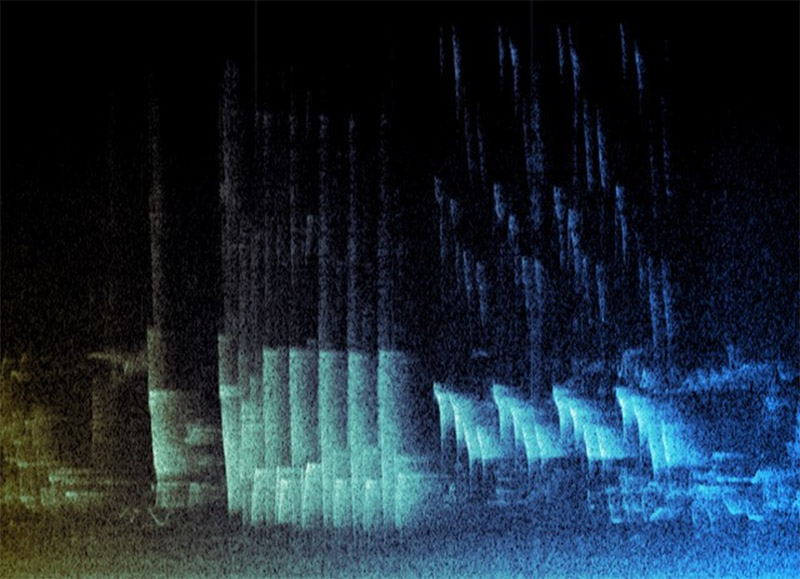
Most recently I have been making a map of the imagined journey that migratory birds undertake from the Sahel to the Alpilles. This idea began from a quote by W. G. Sebald in Rings of Saturn and made me think about animals being witness to the “networks of a complexity that goes far beyond the power of one individual to imagine”. A bird’s eye view of what we have made, extracted and removed. The unspoken need to make that precarious, dangerous and arduous migration from one home to another which resonates so strongly with all human migrations now taking place. All the stories, songs and knowledge that can come from those that undertake them.
“If we view ourselves from a great height, it is frightening to realise how little we know about our species, our purpose our end” W.G.Sebald
Victoria Arney

1971. After twenty-two years in education supported by my family and the state I emerged as a fully-fledged artist with multiple diplomas to prove it. The only problem was that there was/isn’t a job as an artist and so some other skills, those not addressed in education at the time, needed to be deployed. “Signing on” at Hammersmith DHSS was as big an educative experience as had been the previous twenty-two years, a precarious position with an art habit and a monthly rent to support. But, hey, fifty years later and I’m still doing it. Runs deep.
David Redfern

“Every year, human settlements produce 1.3 billion tonnes worth of solid waste products.”
I am currently creating a series of sculptural painting works out of cement bags on my Artist Residency at Farnham UCA. I recycle, upcycle and use pre-used building materials, making them into thought-provoking works of art. I am deliberately cutting down on waste while also experimenting with building products and objects deemed to have been exhausted of all function and value. The quote above ignited the idea to start making artworks out of pre-used building materials.
Chris Horner

Head of a Young Girl”A painting is the process of creation – making something from nothing, using the cerebral amygdala with the doubt or belief in what you don’t know. Shamanistic in its mystery and initiation. As a painter, this is a mindset attempting to perceptually represent what the eye, mind and body experience on a flat two-dimensional surface, with archaic tools and coloured mud. That there is no end in sight and always willing the accident to happen. I delve into the insecurity of not knowing, the uncertainty and that it will get worse before it gets better, with the ongoing unique excitement.”
Peter Clossick
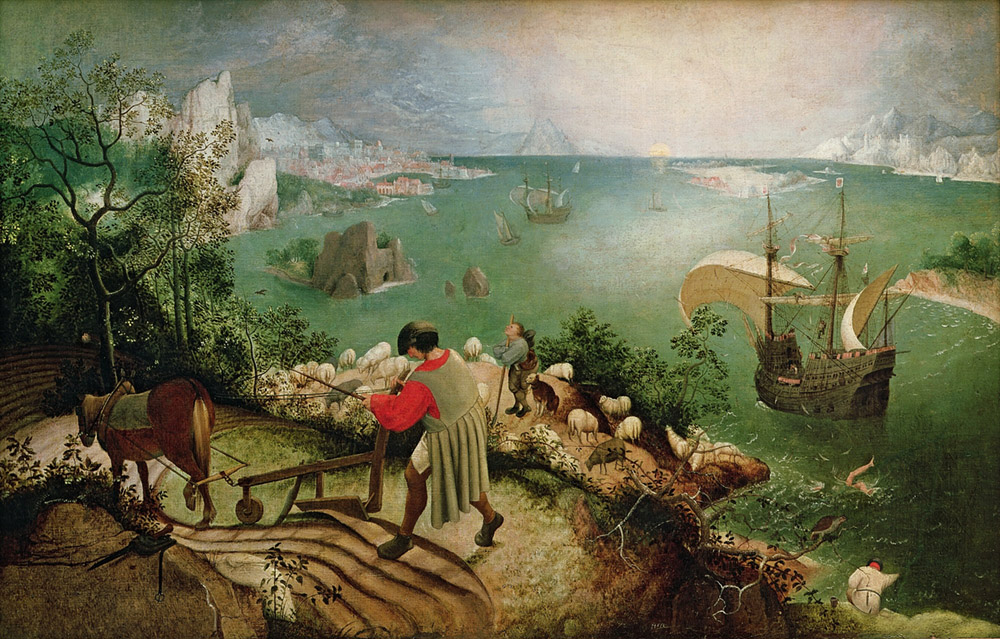
Landscape with the Fall of Icarus, c.1555 (oil on canvas) by Bruegel, Pieter the Elder (c.1525-69);
…precarity’s precarious parable…
…apols….but…it’s inescapable (isn’t it?)…to accept, to be caught up in (who isn’t now…?) the precarious: to live perhaps ‘precariously’ is already (before really getting under way…) to have cast oneself into, to have set off through a strange requesting mode – prayer…precor (Latin) – to beg, to pray: to entreat a perhaps unknowable ‘other’ in the slightest hope for a response that might just relieve, however slightly, the burden of uncertainty defining one’s routine plight…
…so if one is making-for-art then maybe, almost certainly, Icarus-like, it’s on a wing and a prayer… a leap off the edge into the somewhere-else…we make for what we have set up as ‘art’ – a boundarylesss, never proximate, ‘over-there’, an unknowable ‘something-zone’ aside from the relative certainties of our knowing everyday self…requiring the latter to become a supplicant leaping off the known’s edge, and thus casting itself adrift … but still trying to hedge its bet everso slightly with a grain of hope that the unknowable zone of its ‘self’ (always assuming that there is such a ‘self’…) will respond to the entreaty, as it seems to have done now and then in the past, in order to defeat chance with some small but completely unanticipatable gift that the knowing self gratefully accepts and incorporates into its still emergent gest-for-art…but inevitably the pathetic wing crumbles on the crash landing (sea-ing, seeing?) return to the seemingly-seamingly known earth-and-sea…and maybe Breughel was right, nobody else is interested anyway, those nearby don’t even notice for (like Icarus himself…) they are all (fisherman, farmer, sailor, whatever…) wrapped up in their own busy doings as Icarus hits the sea and, perhaps, finds at last his own medium as he swims down into his unknowable depths before returning to the surface with whatever he (under the thumb of Daedalus his crass authoritarian pa) had prayed for so earnestly in order just to be able to go on making for…
Michael Phillipson
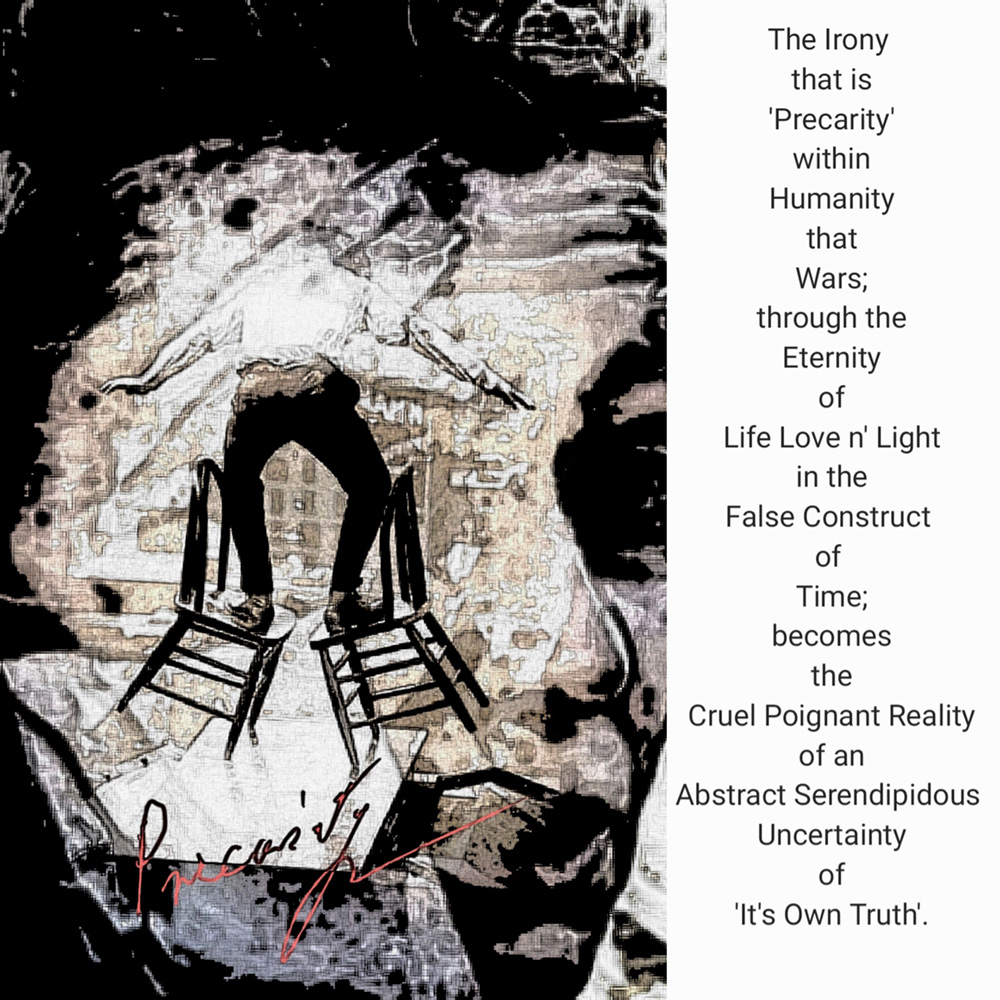
Clive Burton

Odessa Steps Acrylic on Canvas, 120 cm x 120 cm, 2023My art practice spanning over 50 years is diverse – painting, Fine art media, collage, photography, installations, neons, performance. The best way to view it is to go on my website www.suzanswale.co.uk
I started at 16 as a painter and it is now my main practice. What my work says is important. All art says something about colour about the canvas edge about feeling about passion. Mine Is often political. I love colour and mixing hard edge with soft technique, mixing figurative with total abstraction. Chance is important, my composition is crucial. I don’t like my work to be too tight, if it is I mess it up. l love the way Francis Bacon created a cage to have figures on. My work can say things about being female about war. Words are important I use them in my work. I try to say things that are hard to say. Mike Phillipson LG wrote about my work and he got it right (see exhibition catalogue)
I have a work from 1983 in Tate Britain Women in Revolt! Art, Activism and the Women’s Movement in the United Kingdom 1970-1990 8 Nov 2023- 7 April 2024, Scottish National Gallery of Modern Art Edinburgh May 2024- January 2025, The Whitworth Manchester February 2024 -August 2025
Suzan Swale
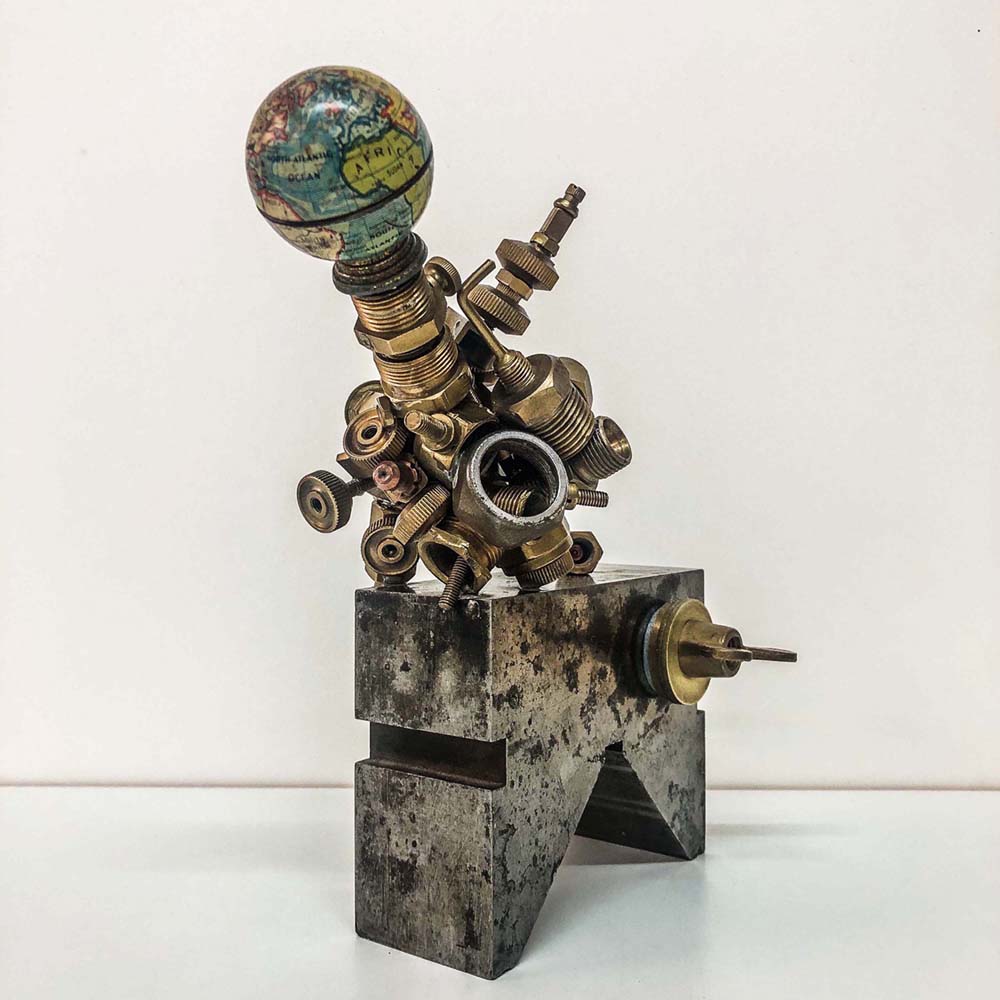
Deus ex Machina – “god out of the machine” is a plot device borrowed from ancient Greek theatre, whereby a seemingly unsolvable problem in a story is suddenly and abruptly resolved by an unexpected and unlikely occurrence. Its function is generally to resolve an otherwise irresolvable plot situation, to surprise the audience, to bring the tale to a happy ending. My sculpture places the world atop a precariously balanced Heath Robinson contraption, or “a monstrous tower of technology” as described by Stuart Laycock in his review of ‘On the Edge’, (an exhibition by artists from The Royal Society of Sculptors). A turn of the cog one way or t’other will decide our fate, and could tip us over or bring us back from the edge.

Chaos (2022) is the artist’s most ambitious installation to date and marks the culmination of a multi-year body of work that has pushed the boundaries of industrial materials and explored their potential reconfiguration. This piece is created from repurposed air conditioning ducting that is strikingly transformed in Bonomini’s hands, becoming almost impossibly supple, lithe and energised. Bonomini breathes life into this most utilitarian of materials, with each strand of twisting, interlocking piping simultaneously embodying the meandering of water pathways and cumulatively forming the presence of a weighty, shifting cloud above our heads.
Through this contrast between industrial building blocks and the sensual elements of nature that they evoke, Chaos both reflects and critiques our relationship to the environment. Now more pressing than ever, this installation highlights the looming threat of our dependence on pipelines and the fragility of the complex network of global supply chains we have come to rely on.
Enhancing this visceral sense of fragility and the inherent time pressures of the climate crisis we find ourselves in, is a custom surround sound piece that accompanies the installation, collaboratively created by Bonomini and the sound designer Dave Hunt, with musical excerpts by Bruno Etienne. Speakers placed both within the piping and strategically located around the exhibition space create an immersive sonic experience that conjures extreme climactic conditions through the crashing of ice, peals of thunder and lightning and the crackling of burning fires alongside the distinctive ticking of a clock.
Paul Bonomini






